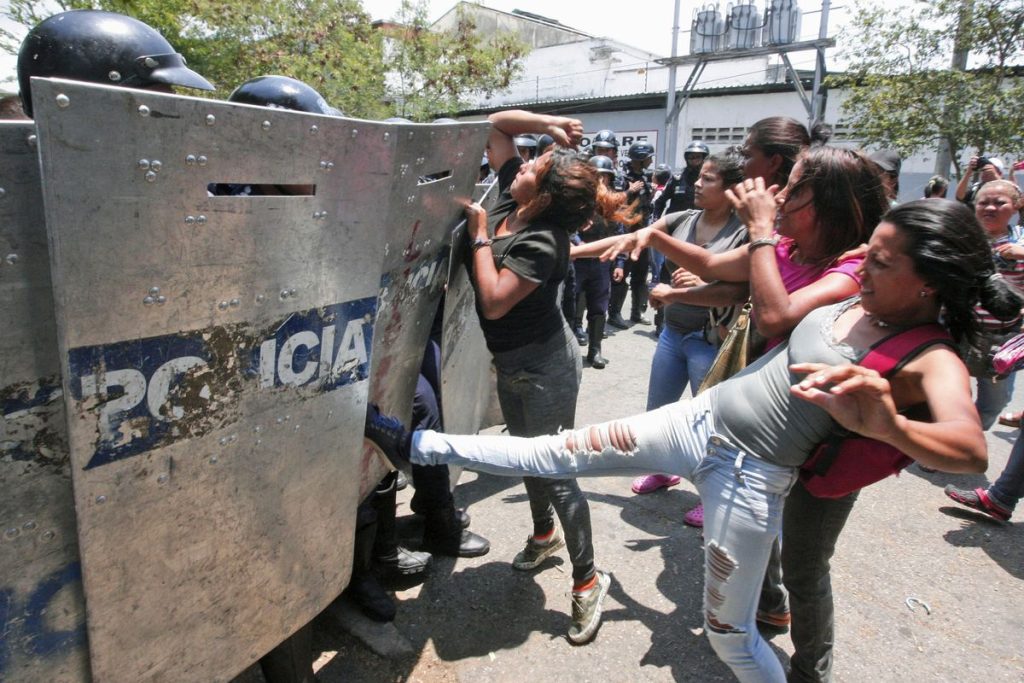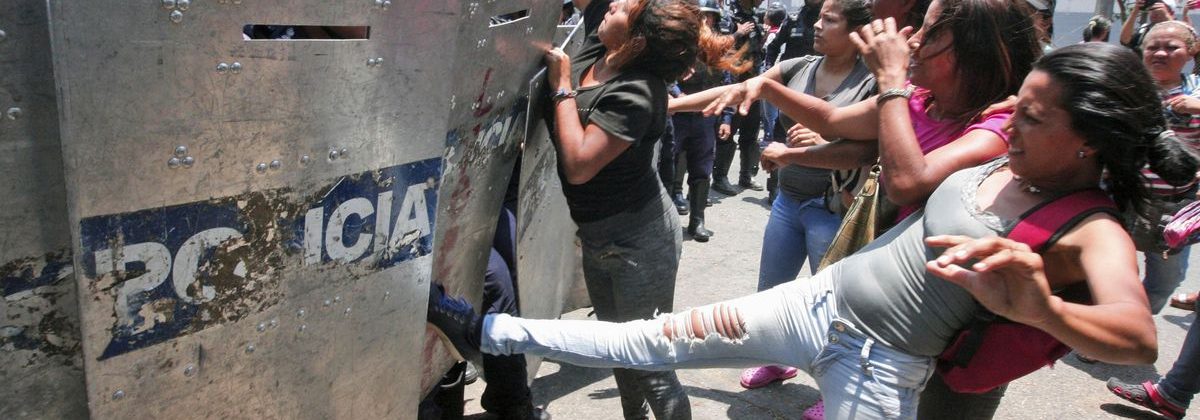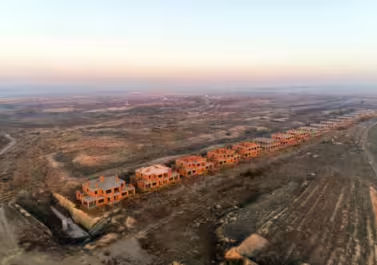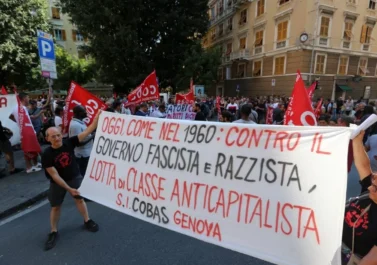
During the George Floyd uprising in 2020, the politics of abolitionism became something of a mainstream concern, at least in anglophone radical circles. For November’s reading group we read What Abolitionists Do by Dan Berger, Mariame Kaba and David Stein, and Every Fire Needs a Little Bit of Help by Jarrod Shanahan, to try and get a better grasp on the movement and its relationship to contemporary class struggle.
Infamously, the US maintains the world’s largest prison population – both absolutely and relatively. Alongside this reality and the starkly racialised structures of its carceral systems, it is no surprise that the US has become the cradle of abolitionist politics and theory. On the other hand, it also begins to explain why the most powerful instances of proletarian rebellion in recent US history have been violently and explicitly targeted at the police. Shanahan recounts the different rebellions and riots in response to the proletarians murdered by pigs in the last couple of decades: the martyr that precipitated the beginnings of the Black Lives Matter movement, Trayvon Martin; the man brutally suffocated by cops, Eric Garner, whose last words became a haunting battle cry in the following uprising; George Floyd, whose torturous murder was recorded and broadcast, sparking the rebellion across the continent that saw cop shops in flames hardly a week later. Mixed into the storm of proletarian rage was the wider discussion of the politics of police and prison abolition. Berger, Kaba and Stein’s text did a good job of sketching out the more multi-faceted aspects of what a politics of abolitionism looks like in the short and medium terms, which run counter to the common idea that abolitionism is just a ‘utopian’ demand.
The abolitionist movement in Britain has its own distinct history, and it wasn’t until the movement’s domestic revival in the 2000s that activists here began to take the US as their main reference point. The British movement for prison abolition originally emerged at the end of the 1960s, as anti-nuclear campaigners were acquainted with the harsh realities of prison life. This led in 1970 to the foundation of Radical Alternatives to Prison (RAP), an organisation calling for the abolition of prisons and their replacement by rehabilitative alternatives. During its early years, the movement was strongly influenced by the Norwegian sociologists Thomas Mathiesen and Nils Christie, although over time the movement became less hippy and more socialist. RAP’s journal, The Abolitionist, was recently archived by Abolitionist Futures and can be read here.
As with the rest of Britain’s militant social movements, the abolitionists suffered through the 1980s and the movement gradually disintegrated under the pressure of the ‘new realism.’ Although the torch was kept burning by academics like Joe Sim and Mike Fitzgerland on one side, and anarchists from the Anarchist Black Cross on the other, the movement more or less disappeared until the mid-2000s, when it was revitalised in part by opposition to New Labour’s proposed ‘Titan Prisons’. In the intervening years, Critical Resistance formed in the US and Angela Davis’ ‘Are Prisons Obsolete’ appeared in 2003, so by this time the movement’s international centre of gravity had decisively shifted to the US. The second wave of British abolitionism now drew heavily on these American influences, and gained from them, both galvanising analyses and a few problems of translation. British activists have tended to carry over slogans from the US wholesale, without always attending to important contextual differences. The slogan to defund the police, for example, has a meaning in the US that does not hold in the UK, since (enfranchised) Americans can, in theory, exert some level of control over state spending via ballot measures. The same is true of the construction and funding of prisons. In this context, calls to ‘defund’ prisons or police represents a tangible, near-term objective around which abolitionists can organise. In the UK by contrast, state expenditures on policing and prisons are much more heavily centralised and calls to defund have nowhere to go except through the state (1). As a slogan it still has an abstract moral force, but it’s one whose path to realisation is much more obviously blocked.
The function of prisons
Marx and Engels understood that the reproduction of capitalism’s class relation tends towards the production of a “reserve army of labour”, also known as the “relative surplus population.” Shanahan writes that “while cops protect real estate investments and other private property, prisons discipline proletarians to accept abysmal wages, and surplus populations are housed in prisons and military barracks.” While undeniably true, some of us felt that this statement would also benefit from qualification. There can be a tendency in recent Marxist discussions of the surplus population to more or less identify this category with those who exist semi-permanently beyond the reaches of the formal economy. The thinking is then that the state responds to this “overproduction” of workers relative to capital’s needs by enclosing excess life behind prison walls. Internationally, however, there exists no consistent correlation between the surplus population and the rate of incarceration. In the UK, for example, unemployment has averaged between 3 and 5% over the last 20 years, with a brief spike of 8% in the fallout of the 2008 crisis. Meanwhile, although it is true that there are many people who live their lives on the edge of bourgeois society, the UK prison population accounts for only about 0.03% of the officially unemployed population.
Marx described the production of a relative surplus population as a tendency of capitalist development. Like all the tendencies Marx describes in Capital, it’s presented in an abstract form and is, in reality, subject to all kinds of counter-tendencies, so in practice takes a range of concrete expressions. The surplus population is heavily stratified as a result. The surplus population does not only include the permanently unemployed (‘paupers’), but also the temporarily unemployed (the ‘floating’ and ‘latent reserve armies’) and those in particularly shitty or insecure work (the ‘stagnant pool’). So while it’s true to say that capitalism houses its surplus populations in prisons, we should remember that this is not the only place where we can be found. A zero-hours contract is as much of a mark as a prison sentence. The idea, therefore, that prison expansion can be explained mainly as a means to warehouse surplus proletarians, which you can encounter from time to time in less sophisticated Marxist analyses of prisons, doesn’t feel convincing to us.
So what else has driven prison expansion then? We initially asked whether it could be explained by economic factors. One comrade asked whether there was an incentive to open prisons for the cheap labour available from incarcerated workers, but it appears that prisons are a pretty complicated environment to organise a labour process in. Security requirements both restrict the kind of work that is allowed and also badly slow down day-to-day operations (due to all the necessary security checks etc.). Actually getting the prisoners into the workshops meanwhile relies on adequate staffing levels among the guards, which are by no means guaranteed. Then there is the risk of security lockdowns in case of emergencies, which shut down operations entirely. Hardly a model environment for just-in-time production! While some firms find ways of making it work, for most capitalists these slow and unpredictable conditions significantly outweigh the benefits of extremely low wage costs. The vast majority of prisoners who do work, work at maintaining the prison itself – cooking, cleaning, gardening, etc. – and it is here that the low wage bill really plays a role, in reducing the costs of incarceration itself.
Another economic factor could be related to the privatisation of the prison estate. As of October 2021, 18% of prisoners in England and Wales were housed in private prisons, a substantially higher share than in the US. The UK played the main role in spearheading the introduction of private prisons into Europe in the early 1990s, initially under John Major’s Conservative government and then under New Labour. Although there’s a common assumption that private prison places are cheaper for the state, the actual costs vary significantly from prison to prison, but average out on a level more or less equivalent to public sector prisons. Their growth is therefore probably more of a reflection of effective lobbying and a commitment to “the market” than a sober rationalisation of state expenditures as such. On this point we also discussed just how expensive it is to incarcerate someone in the UK: in 2019/20 it cost an average of £42,670 to lock someone up in England and Wales, in contrast to an average annual income of £27,500. If prisons do exist as a “solution” for surplus populations, on a case-by-case basis it’s an extremely expensive one.
The privatisation of prisons is generally thought to drive prison expansion through the production of economic incentives for certain sections of capital (or the state) to lobby for harsher law and order policies. While this no doubt plays a part, we should also take care to avoid economic reductionism on this point. The widespread perception of social breakdown in the 1970s led to the genuine popularity of “law and order” policies as a response to the crisis- ravaged conditions of society. For many, the political credibility of politicians became premised on their ability to appear tough on crime. The ensuing political arms race has resulted in the massive criminalisation of ever increasing areas of life, and increasingly severe sentences for those ending up in the courts.
If prisons can be said to have one primary role, ultimately it does seem to be that of imposing discipline and conformity (as opposed e.g. to providing a direct means for accumulation), as Shanahan rightly states. The threat of the violence of imprisonment is a powerful weapon for preemptively suppressing non-conformance and rebellion. It is a necessary mechanism for the reproduction of such a nonsensical and contradictory system. Abolitionists will often stress that, in many cases, the law does not operate effectively as a deterrent, since many people commit crimes out of impulse or desperation, not rational calculation. This is obviously true, but also neglects the extent to which a large part of the population are effectively disciplined by fear of the state. Capitalist society’s reliance on prisons, even in countries with very high rates of incarceration, is premised on only needing to incarcerate a small minority in order to have a much wider disciplinary effect. This also puts the economic costs of prisons in perspective. While it is expensive to incarcerate people viewed on an individual basis, it is much, much cheaper to discipline the whole population by incarcerating a small minority of people than it is to ensure the basic needs of all people are met across society as a whole.
Accountability in a class society?
In many ways, prisons and policing are the bluntest forces of the compulsions of capital. Those who refuse to participate in the social logic of capital’s reproduction often find themselves faced with the immense violence of the state. Whether these proletarians are those who exist or act outside the confines of wage labour, or are those who consciously act against these conditions, the baton and the cell are important elements of capital’s pervasive power to coerce compliance on the greater mass of proletarians. In this way then, we can view systems of incarceration, from the pig to the pen, as deeply necessary features of a society based on classes.
This raises the question of what scope there is to do things differently in a society which remains shaped by capital and the state. In Shanahan’s essay, he explores the results of attempts to put the abolition cart before the communist horse. He surveys the outcomes of attempts to carve out “autonomous zones” and long-term occupations of public space. He argues that such attempts, while arguably expelling the violent arms of the state to their peripheries, do little to break through the conditions of domination that they claim have been pushed out of their “liberated space”. Indeed, a comrade in our discussion noted that during the Movement of the Squares, occupiers were forced to confront gendered violence as an endemic issue. In Cairo, occupiers formed patrols that would monitor the squares for signs of harassment or attacks and intervene by force to break up groups of predatory men.
These problems cannot be ignored. We spoke about how, from the internal life of groups through to large scale social unrest, both gendered violence itself as well as inadequate or counter-productive attempts to deal with it continually open devastating rifts, not only in our lives but also in movements. In a society where many people can barely deal with conflicts over parking spaces reasonably, let alone anything more serious, we didn’t think our ability to deal with serious interpersonal issues was something we can just take for granted, but requires active work to develop skills that many of us currently lack. Without these skills, as well as resources, time, and the actual existence of an accountable “community”, most well-meaning accountability processes just don’t really work. At the same time, the alignment of women’s organisations and the police grows stronger all the time. Because gendered violence is framed more as a criminal justice issue (rather than, say, a public health issue), funding for services often comes from the police and criminal justice system, which then requires these organisations, in turn, to lobby them for more funding, and to build closer policy relationships with them in order to shape their strategies for dealing with the issue.
By eroding our direct interdependencies with each other and replacing them with dependence on the market, the “double freedom” (2) of capitalist development contains within itself the contradictory “freedom” to be unaccountable. This is a limit that accountability processes will continually run up against, when in most cases anyone who isn’t prepared to face up to their actions can always cut ties and start over. But that doesn’t mean that these experiences are pointless. Even if we can’t expect some kind of complete reparation in every (or any) case, a huge amount can be learned by direct participation in these processes – from “failures” as much as “successes” – and it remains necessary to find ways of supporting survivors and taking steps to prevent fucked up behaviour without recourse to the police.
Notes
- Previously this line read “In the UK by contrast, state expenditures on policing and prisons are heavily centralised and calls to defund have nowhere to go except through Westminster”. Somebody got in touch to say that not all police funding decisions do go through Westminster, since the police receive funds from council taxes too. Fair cop. Not only do the police receive some funds from council taxes but elements of the criminal justice system are devolved to the Northern Irish, Scottish, and Welsh parliaments too. What we should have said is that these decisions remain in the hands of the state, and on a much more heavily centralised basis than the (federal) US. In England, referendums on taxes for police funding are also possible, but only to block increases in excess of a certain state-mandated threshold – as happened in Bedfordshire in 2015, the only referendum of this kind to date.
- The freedom to work and the freedom to starve



